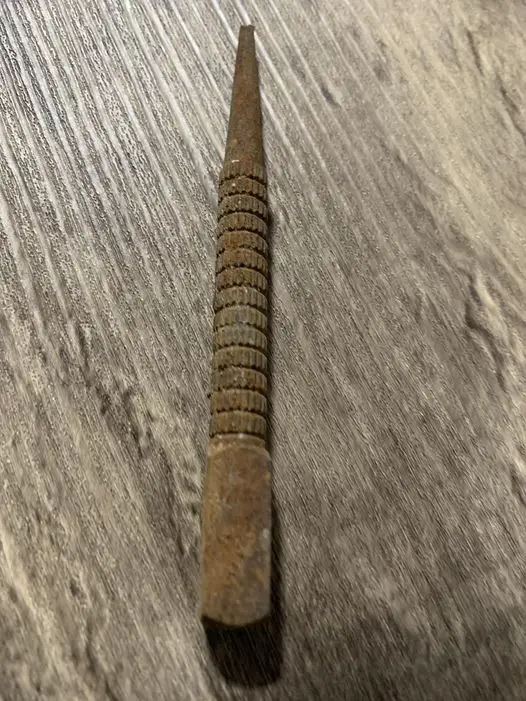Rediscovering the Nail Punch
In the realm of woodworking and carpentry, certain tools have stood the test of time, embodying both simplicity and functionality. One such tool is the nail punch, a small yet indispensable instrument that has been a staple in workshops for generations. Often associated with the meticulous craftsmanship of our grandfathers, the nail punch remains a game-changer in today’s woodworking practices.

Understanding the Nail Punch
A nail punch, also known as a nail set, is a slender, rod-like tool designed to drive the head of a nail below the surface of the wood. This technique allows for a smooth finish, enabling the application of fillers and paints without the interference of protruding nail heads. Typically made of hardened steel, nail punches come in various sizes to accommodate different nail heads and are characterized by a flat or slightly concave tip that aligns with the nail head during use.

Historical Significance
The nail punch has been an essential component of woodworking for centuries. In the mid-20th century, particularly during the 1950s to 1980s, woodworking was a common household activity. Families often engaged in DIY projects, repairing furniture, building shelves, or crafting decorative items. The nail punch was integral to these endeavors, ensuring that nails were set below the wood surface, allowing for a polished and professional finish. This practice not only enhanced the aesthetic appeal of the work but also contributed to the durability and longevity of the crafted items.
The Role of the Nail Punch in Craftsmanship
The primary function of a nail punch is to countersink nails without damaging the surrounding wood. By driving the nail head below the surface, woodworkers can apply wood filler over the indentation, creating a seamless appearance once sanded and painted. This process is crucial in finish carpentry, where the visual appeal of the final product is paramount. Additionally, setting nails below the surface reduces the risk of snags and injuries, contributing to the safety and functionality of the finished piece.
Modern Applications and Relevance
Despite advancements in technology and the advent of power tools, the nail punch remains relevant in contemporary woodworking. Its simplicity and precision make it irreplaceable for tasks that require meticulous attention to detail. For instance, when installing trim or molding, a nail punch allows for the discreet setting of nails, preserving the integrity of the woodwork. Moreover, in restoration projects, where maintaining the original appearance is crucial, a nail punch enables craftsmen to work with care and precision, ensuring that repairs are both functional and aesthetically pleasing.
The Nail Punch as a Symbol of Quality Craftsmanship
Beyond its practical applications, the nail punch symbolizes a commitment to quality and attention to detail. Its use reflects a craftsman’s dedication to producing work that is not only functional but also visually appealing. In an era where mass production often prioritizes speed over quality, the nail punch serves as a reminder of the value of traditional craftsmanship. It embodies the principles of patience, precision, and pride in one’s work—values that are timeless and continue to resonate with artisans today.
Preserving the Legacy of the Nail Punch
For those who have inherited vintage nail punches from previous generations, these tools carry historical and sentimental significance. They are tangible links to the past, representing the skills and dedication of craftsmen who valued quality and durability. Using these tools in modern projects not only honors their legacy but also connects contemporary artisans to a rich tradition of woodworking excellence.
Conclusion
The nail punch, though modest in appearance, holds a significant place in the history of woodworking. Its enduring relevance underscores the importance of traditional tools in achieving precision and quality in craftsmanship. As we continue to embrace modern technologies, the nail punch serves as a testament to the enduring value of simplicity and the timeless principles of skilled workmanship.

